Michelangelo and the Pope's Ceiling -Ross King
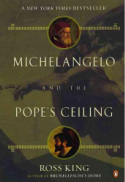
Michelangelo and the Popes Ceiling teaches the reader about art. The reader is able to understand how renaissance artists and sculptors, such as Raphael Santi and Michelangelo, used perspective to make their paintings or frescos seem more realistic. One problem that Michelangelo encountered when panting the ceiling of the Sistine Chapel was that his images were too small. If one looks carefully at the ceiling, the images of the figures painted get larger as the fresco goes from one end of the wall to the other. Michelangelo worked on a scaffolding while painting the images, without the sense of distance from the viewer, Michelangelo did not know how large to make his images. One major part of this book is teaching about depth perspective, and how depth of an object changes with distance and spacing.
The Five People You Meet in Heaven -Mitch Albom
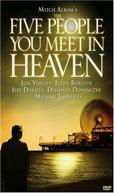
The Five People You Meet in Heaven, teaches the reader how every action effects someone. The tiniest actions that may seem insignificant to one, could have a huge impact on another person. For example, a kid runs out to get ball that was kicked into the street. A car driver swerves out of the way to avoid hitting the kid. The kid continues on playing and enjoying life, thinking nothing of the event that had just occurred. The driver of he car pulls over a few blocks down from where he swerved, he realizes he is having a heart attack, and dies shortly thereafter. The small insignificant events to one person are life changing to others, and Mitch Albom teaches us this through his novel.
The Wind Singer -William Nicholson
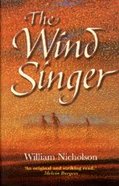
The Wind Singer is an intriguing book about a society solely based on grades. ithin the society, how smart you are determines everything, housing, lifestyle, etc. The main charecters in the novel try to escape their society and eventually find a place near the outskirts of town. They meet the mud-people. The mud-people are care free and live however they want to. They don't care about judgement or what people think of them. The Wind Singer does an excellent job of contrasting the benefits and downsides to each society. William Nicholson allows the reader to see both sides of the story and allows the reader to determine why judgement is necessary, and when judgement can lead to problems.
Into Thin Air -Jon Krakauer
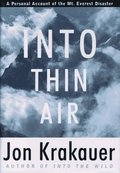
One of the most stunning and epic adventures ever, Jon Krakauer takes you through his experience of climbing Mt.Everest. Krakauer describes how suddenly anything can take a turn for the worse when bad weather conditions role in when the climbing group is at the top of the mountain. His decisions on how to act saved his life in the few moments that he had to prepare for one of the toughest fights of survival. Krakauer explains how one has to value their life and how they have to be cautious of their surroundings, for at any moment things can change. Krakauer teaches the reader that their are multiple ways to react to different situations, and depending on ones strengths and weaknesses, their are different ways to react.
Plum Island -Nelson DeMille
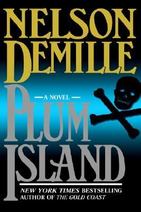
One of the most thrilling adventurous books that DeMille wrote, Plum Island represents the change of characters throughout the book. The true identity of the characters come into play as John, the main detective on the murder case, interrogates them. Beth Penrose, John's assistant helps put pressure on the convict and forces the convict to eventually give away clues as to why and where he murdered the Gordons. The Gordon's worked on Plum Island, so at first when they were found murdered, the detectives thought that biological warfare was into play. John, who happened to be a Long Islander, saw right through the bluff of the convicts and realized their was a bigger picture to the story. John shows us how little clues and details that were previously mis-interperated can lead to the solving of a crime case.
The Odyssey -Homer
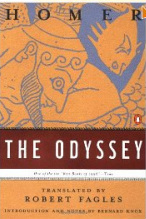
The Odyssey shows how expectations are different than they are originally perceived. When Homer first introduces us to our war hero Odysseus, he portrays him as weak and crying on a rock. Homer also shows us how horrible the living conditions are in Ithaca, the kingdom of the great Odesseyus. Finally, when Odysseus arrives home, he was originally expecting a warm welcome and a home not invaded by suiters. These expectations are in all cases not met. This allows the reader to establish a sense that things aren't always the way they seem. The reputation of something can be built up, but the actual product could be horrible. Expectations skew the bias of a scene and thus alter the perspective of the reader or viewer of an event.
The Grapes of Wrath -John Steinbeck
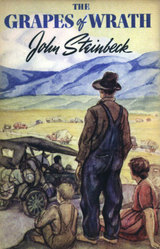
During the time period in which Grapes of Wrath was written, Steinbeck went through persecution of being a communist for the ideas that he portrayed in his novel. He showed the truth behind what was happening to the migrant wokers in California. Steinbeck shows how the Californians build up the reputation of California to be golden and filled with work, only to be Hoovervilles in reality. The Okies travel to California thinking that they have a great opportunity and chance to succeed. They are used to a shortage of food and horrible living conditions, so picking grapes or oranges for a change didn't seem so bad to them. The Californians see the okies as invasive and bringing down the reputation of California. They see them as an increase in the poor working class that live in California, and thus hate them for that.
Gilgamesh -Unknown
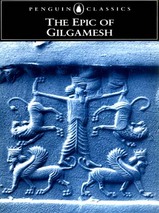
This epic story teaches the readers how to deal with loss. In Gilgamesh, Gilgamesh meets a friend, Enkidu. They quickly establish a close and strong relationship. Together they fight the evil Humbaba, and while doing so, Enkidu gets killed. Gilgamesh for the first time in his life has lost something. He can not bring his friend back, and for once he doesn't have power. Gilgamesh realizes what it is like to lose or to be the subject to a power greater than himself for once. He understands the pain that other people have faced, and sees the world through a different light. Gilgamesh tries as hard as he can to bring his friend back to life, which he thinks is possible. From the point of view of the other characters, they see Gilgamesh as silly and foolish, but Gilgamesh, blinded by grievance, sees his actions as helping his cause.
The Old Man and the Sea -Ernest Hemingway
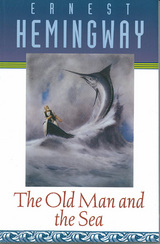
In The Old Man and the Sea, Hemingway allows readers to enter a fisherman's world whose life is greatly impacted by perspective. Santiago, the main character, decides to go out to sea in order to catch a fish. Although he hasn't caught a fish in eighty four days, Santiago begins his journey with a positive perspective believing that he will catch a fish. This positive perspective he carries along definitely influences the outcome of his journey. Had he gone in with a negative perspective Santiago would never have caught a fish. The perspective of the fishermen in this book is also very important. They view Santiago with a false perspective believing he's just a washed up old fisherman, but they are proven wrong when Santiago brings back a giant skeleton of a fish. Quickly they realized they have misjudged Santiago and see him for who he truly is. Acknowledging that the fishermen have changed their point of view on Santiago, in both Hemingway's and our perspective Santiago's journey was a success even if he only came back with a skeleton...it's all about if you see the glass half full or half empty.
The Little Prince -Antione de Saint-Exupéry
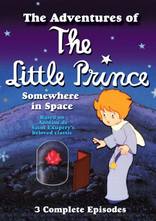
The book The Little Prince by Antoine de Saint-Exupéry is often associated with the word perspective. Although it is classified as a children's book, it is read by many adults because it contains several mature themes. Readers are able to not only view the perspective of an adult, but that of a child as well. From a child's perspective, everything is so simplistic. Full of imagination, they are able to see things that adults tend to overlook. Adults in the book are seen as narrow minded human beings, only focused on reaching their unreachable goals. These characters contain only minuscule amounts of perspective. The opposite is true for children. Children contain vast amounts of perspective, looking at certain situations from various points of view.
To Kill a Mockingbird -Harper Lee
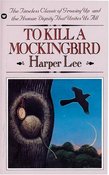
To Kill a Mockingbird, written by Harper Lee, is a book that allows readers to learn multiple life lessons. The most important lesson the book teaches is to consider the perspective of others, before judging them. He expresses this lesson twice in the book. First at page thirty six and then at page three hundred twenty. The first time Atticus attempts to teach Scout not to judge others until she knows their full story first, but being a child she looks past this and judges Boo Radley from what she's heard rather than what she has truly observed. The second time, Scout has grown a lot and steps onto Boo Radley's porch. From there, she can see everything Boo saw and realizes what her father meant. She can truly understand and judge Boo Radley for the person he is by stepping into his shoes.
_____________________________________________________________________________________________________________
Sources:
http://www.gradesaver.com/to-kill-a-mockingbird/study-guide/major-themes/
http://www.tvshowsondvd.com/graphics/news3/LittlePrince-Space.jpg
http://www.sparknotes.com/lit/littleprince/themes.html
http://wiki.answers.com/Q/What_is_an_author's_perspective
http://uhaweb.hartford.edu/rlc/authorperspective.html
http://www.readingmatters.co.uk/bookimages/show.php?048.jpg
http://lahaiseslair.com/lauraj/files/2010/06/lge017093d.jpg
http://pagspages.files.wordpress.com/2011/05/sistine-chapel.jpg
http://4.bp.blogspot.com/_7wd12zq5Tos/SlwhzKWNEuI/AAAAAAAABMk/RBwOVdrKc-A/s400/Into+Thin+Air.jpg
http://www.syndetics.com/index.aspx?&isbn=9780446515061/LC.GIF&client=selcp
http://1.bp.blogspot.com/-6DPsDfU5gwg/TZLtA2KxpvI/AAAAAAAAGfg/7nSBU0FKKGE/s1600/The%2BGrapes%2BOf%2BWrath.jpg
See all sources on our bibliography.
Sources:
http://www.gradesaver.com/to-kill-a-mockingbird/study-guide/major-themes/
http://www.tvshowsondvd.com/graphics/news3/LittlePrince-Space.jpg
http://www.sparknotes.com/lit/littleprince/themes.html
http://wiki.answers.com/Q/What_is_an_author's_perspective
http://uhaweb.hartford.edu/rlc/authorperspective.html
http://www.readingmatters.co.uk/bookimages/show.php?048.jpg
http://lahaiseslair.com/lauraj/files/2010/06/lge017093d.jpg
http://pagspages.files.wordpress.com/2011/05/sistine-chapel.jpg
http://4.bp.blogspot.com/_7wd12zq5Tos/SlwhzKWNEuI/AAAAAAAABMk/RBwOVdrKc-A/s400/Into+Thin+Air.jpg
http://www.syndetics.com/index.aspx?&isbn=9780446515061/LC.GIF&client=selcp
http://1.bp.blogspot.com/-6DPsDfU5gwg/TZLtA2KxpvI/AAAAAAAAGfg/7nSBU0FKKGE/s1600/The%2BGrapes%2BOf%2BWrath.jpg
See all sources on our bibliography.
